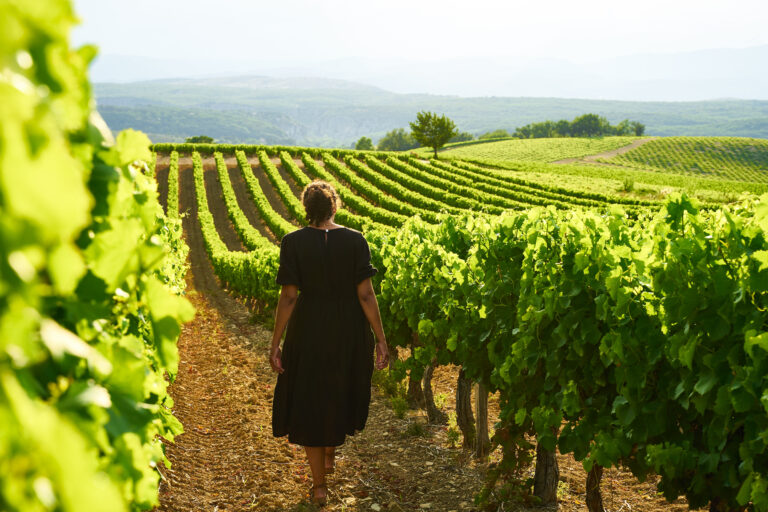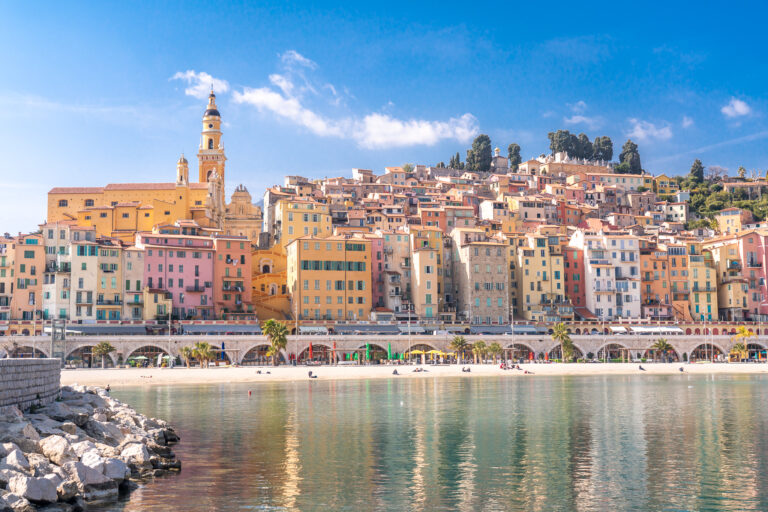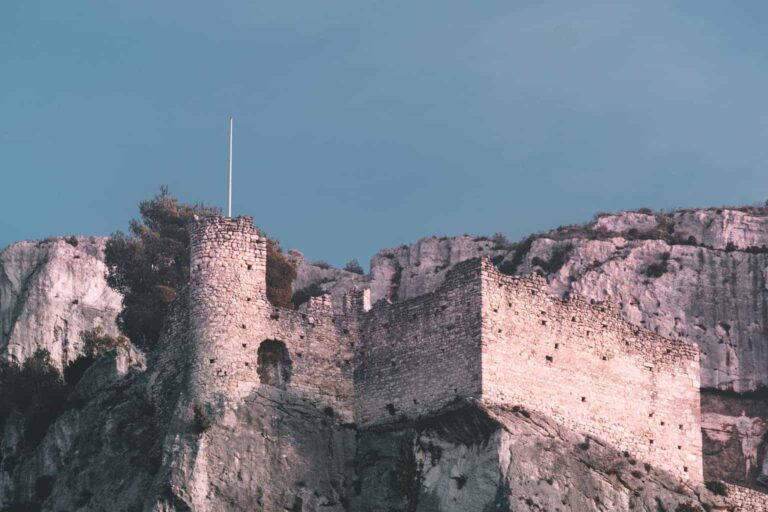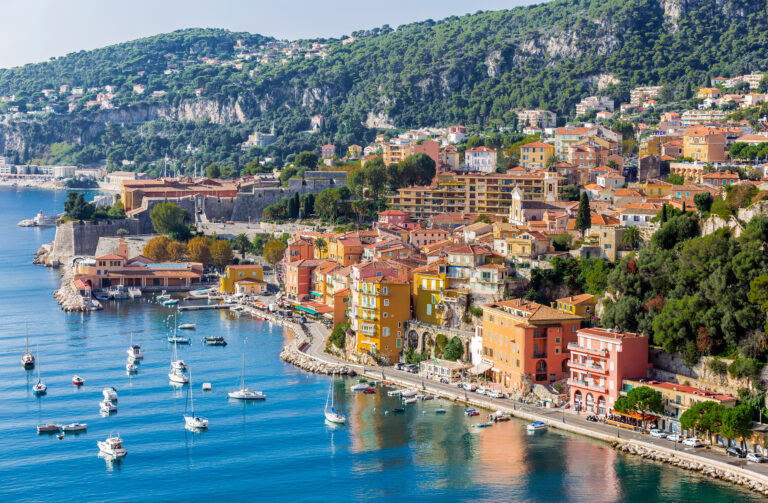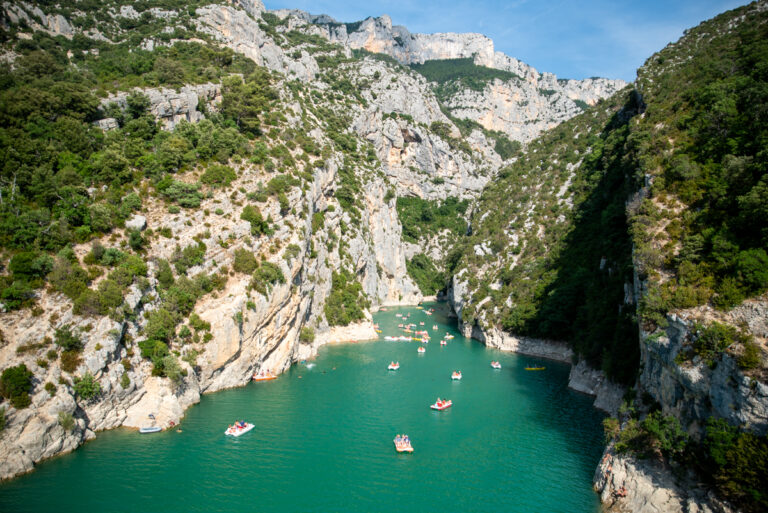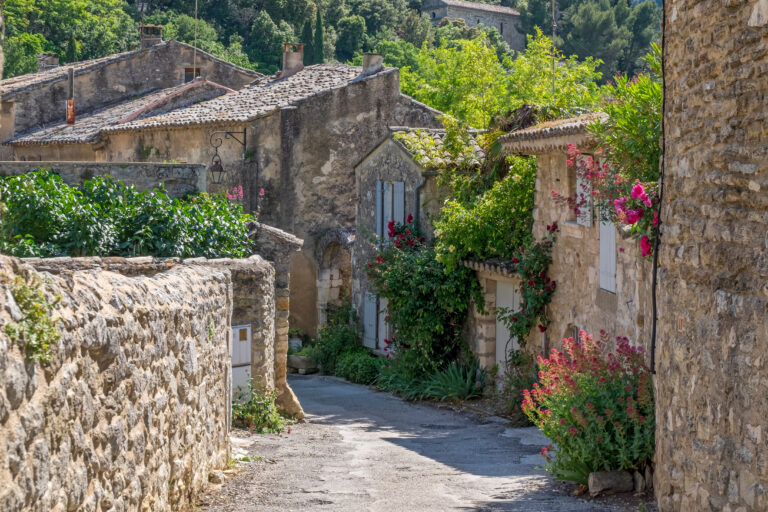10 Stunning Historical Places in France to Add to Your Bucket List
From papal palaces to prehistoric cave paintings, island monasteries to cavernous wine cellars – France offers some of the most exciting and spectacular historical sights in Europe!
With over 40 designated UNESCO World Heritage sites in France, there are plenty of reasons to take a trip to this fascinating country. Historical sites in France offer an intriguing and fascinating window into French culture.
Traces of France’s rich and diverse history can be found all over the country, including Roman viaducts and amphitheatres, Gothic cathedrals, dreamy medieval castles and royal palaces.
Indeed, France’s history is wrapped up with its cultural heritage, and you’ll find historic pilgrimage routes, wine cellars, vineyards and valleys, all included on the UNESCO World Heritage Site list.
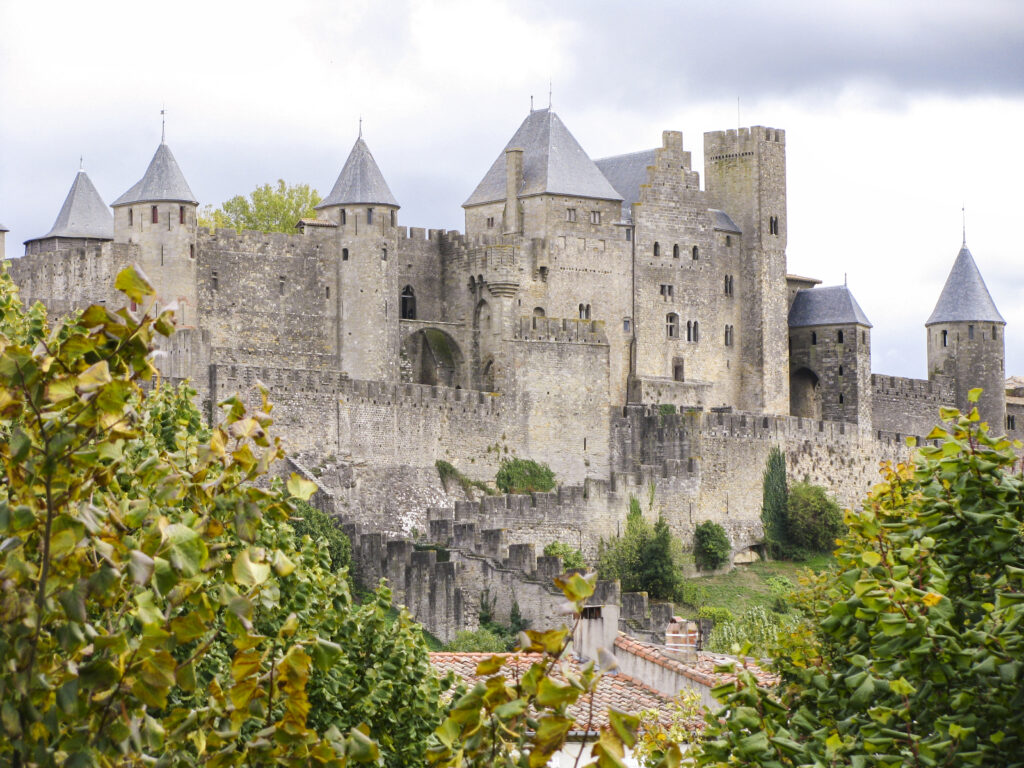
From historical monuments to natural heritage sites, some of the most well-known places in France also offer you the opportunity to step back in time and uncover the secrets of the country’s past.
There are so many cultural attractions in France, that it’s sometimes difficult to know where to start! This helpful guide is designed to give you some inspiration – my pick of some of the most amazing UNESCO World Heritage Sites in France.
This article may contain compensated links. See our full disclosure here.
Must-See UNESCO World Heritage Sites in France
Play eeny, meeny, miny, moe, or plan a route to visit them all! This map of France’s historical attractions has been prepared as a visual guide so you can plan your visit with ease.

PALACE & PARK OF VERSAILLES, PARIS
Of all the things to see in France, the Palace of Versailles surely tops the list. Seat of the ‘Sun King’, and the iconic emblem of the French monarchy, Versailles is one of France’s most glittering treasures.
This opulent palace was, for almost a century, the epicentre of French politics, and plenty of scheming, intrigue and scandal went on within its walls. The French monarchy may be gone, but they left behind a remarkable architectural testimony to the power and mystique of divine kingship.
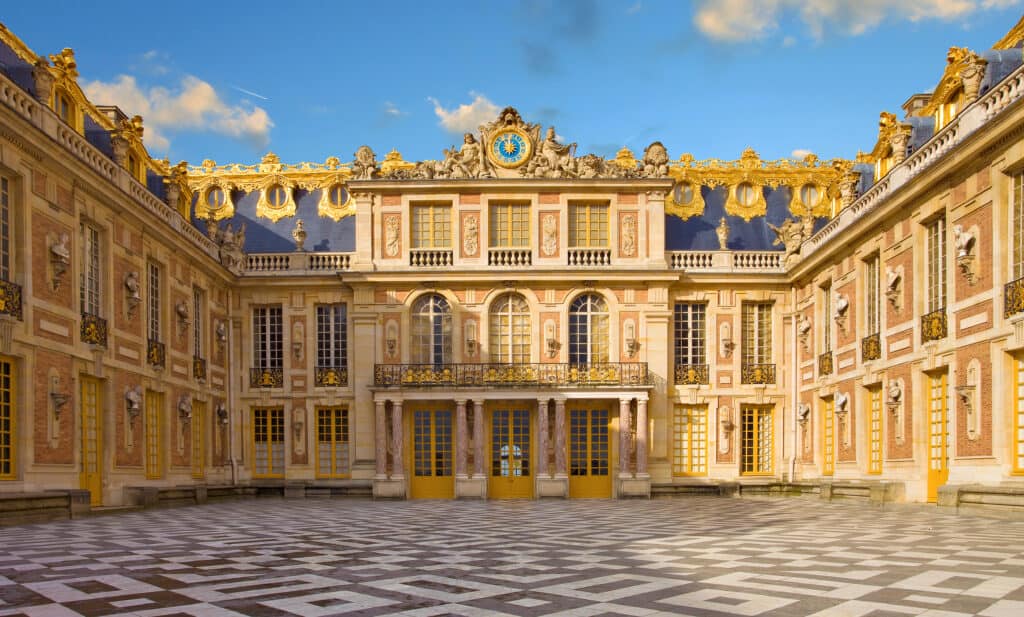
Versailles was built as a hunting lodge by Louis XIII in the early 17th century, but it was his successor, Louis XIV, who would transform the site into the beautiful, lavish palace that still stands today. Taking the sun as his emblem, Louis built a gilded palace that would dazzle his subjects (and his enemies!).
Today, this palace and its extensive parks and grounds are open to the public, making for an ideal day trip from Paris. Come to Versailles to marvel at the shimmering Hall of Mirrors, uncover the secrets of Marie Antoinette’s bedroom, and get lost in the lofty majesty of the Grand Chapel.
If that’s not enough, there are acres of parkland and gardens to explore, with canals, shaded groves, and fountains galore.
Read More: Paris Travel Guide
GRANDE ILE & NEUSTADT, STRASBOURG
Strasbourg, nestled in France’s northeast corner, is one of the country’s most distinctive cities. Historically bound to both Germanic and French cultures, Strasbourg is proud of its dual inheritance, and the magical historic district on the Grand Ile is a testimony to this rich and diverse heritage.
Here you’ll find winding streets lined with colourful timber-framed houses, all leading towards the cathedral, a true celebration of Gothic majesty. The Grand Ile is packed with fabulous buildings and is well-deserving of UNESCO World Heritage status.
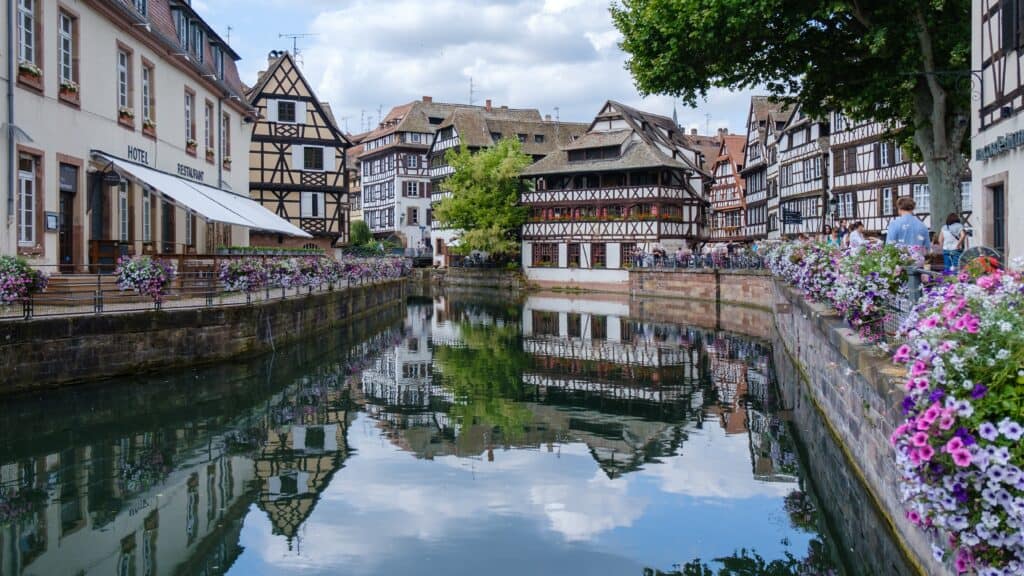
Think of Strasbourg, and you might inevitably think of Christmas – when the historic old town is decked out in lights, decorations and Christmas markets. This ancient tradition is a delight for the senses, with the aroma of gingerbread and mulled wine filling the air! Strasbourg’s Christmas markets are some of the oldest in Europe and offer a festive treat that must be experienced at least once in a lifetime.
However, don’t let appearances fool you – Strasbourg is a historic city but it certainly isn’t stuck in the past. This fascinating, vibrant town is constantly reinventing itself, holding on to its history while looking to the future. The perfect place for a special weekend break, and one of the best cities in France!
MONT SAINT MICHEL, NORMANDY
The image of Mont-Saint-Michel, rising up from the mists that haunt the coast of Normandy, is the stuff of fairy tales. This beautiful monastery, founded in the 10th century, was built up gradually over the medieval period, culminating in a religious fortress protected by high walls and the swirling seas.
According to local legend, the decision to construct the monastery was taken by Aubert, bishop of Avranches, following a vision of the Archangel Michael, who instructed the bishop to build a chapel atop the island that sat just off the coast.
This proved to be sage advice, as the natural and man-made boundaries that surround Mont-Saint-Michel have assured its survival throughout the centuries of war and destruction that followed.
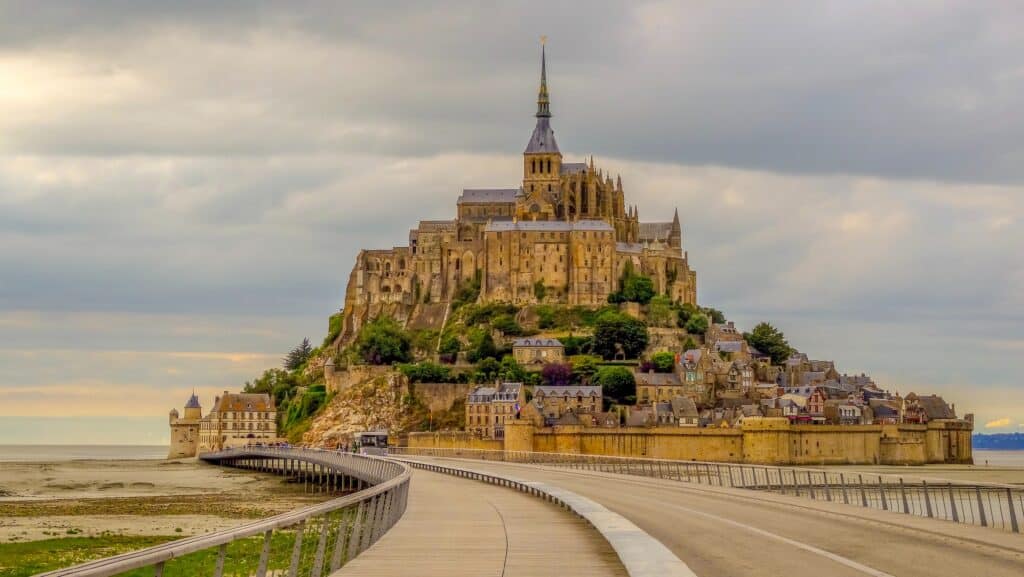
Pilgrims would need to wait for the tidal waters to recede before they could access the island, and even today, visitors can walk in their footsteps, wading through the shallow waters to reach the monastery!
Mont-Saint-Michel is one of the most visited places in France, and also one of its finest natural heritage sites. In recent years efforts have been made to reduce the impact of silt deposits in the bay, ensuring that this triumph of French architecture remains safely on its island. This iconic piece of French heritage looks set to last for another thousand years!
JURISDICTION OF SAINT-ÉMILION, BORDEAUX
Back in the 8th century, a French monk fled his home in Brittany and made his way down to the lush and fertile region around Bordeaux. He established himself as a hermit in the caves of Ascum Bas, performed a few miracles and soon attracted a significant local following.
By the time of his death, the local area had become an important religious centre, attracting pilgrims from across Europe. The monk’s name was Émilion, and the village to which he gave his name would go on to become one of the most famous wine-producing regions of France.
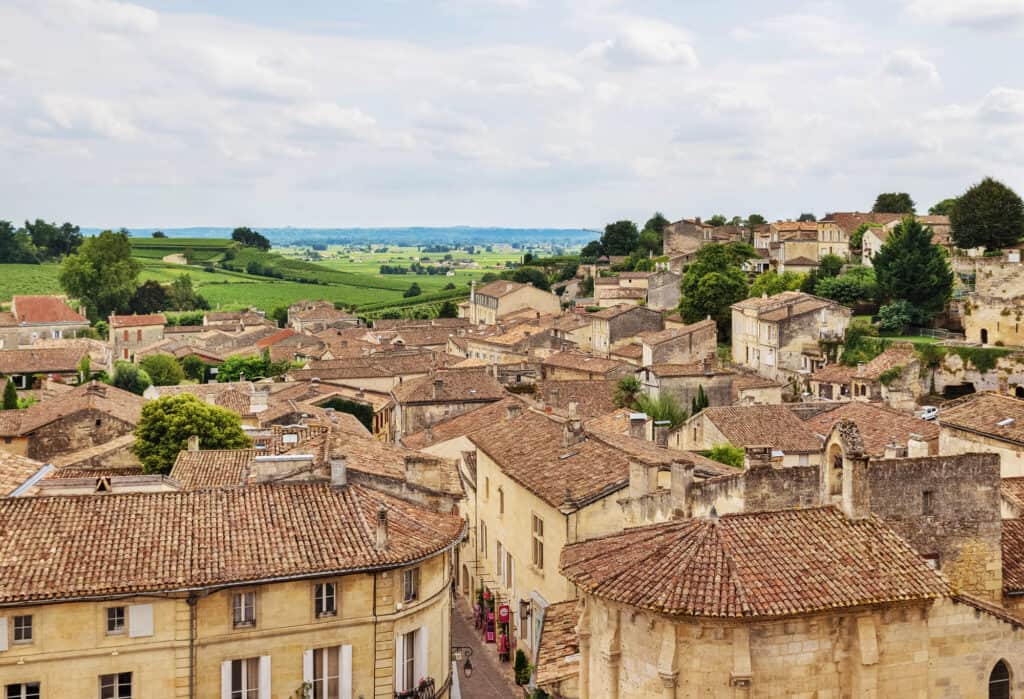
Saint-Émilion is now synonymous with winemaking, and the beautiful villages and hills around Bordeaux produce some of the country’s finest and most diverse wines. Viticulture has a long history here, going back to the Roman period, and one of its most distinctive institutions is the Jurade, a wine-making brotherhood founded by King John (of England) at the end of the 12th century.
The spring feast and the autumn harvest festival organised by the Jurade is a unique and spectacular event, not to be missed! Even if you’re not passionate about French merlots and cabernet sauvignons, there’s plenty to explore in this beautiful region.
With picture-perfect villages, labyrinthine cave complexes, and rolling green hills, Bordeaux is sure to win your heart, just as it won over the real Saint Émilion, all those centuries ago.
PREHISTORIC SITES & DECORATED CAVES OF THE VÉZÈRE VALLEY, DORDOGNE
Step into the Vézère Valley, in the Dordogne, and you’ll step back in time to a land where woolly mammoth and sabre-toothed tigers roamed the earth. Dubbed the ‘Valley of Mankind’ by 19th-century archaeologists, the Vézère Valley boasts an impressive 147 prehistoric sites, some offering fabulous cave-paintings and wonderfully-preserved artefacts.
Dating primarily from between 15,000BC and 10,000BC, these caves and grottos are the ideal places to learn about the origins of humanity.
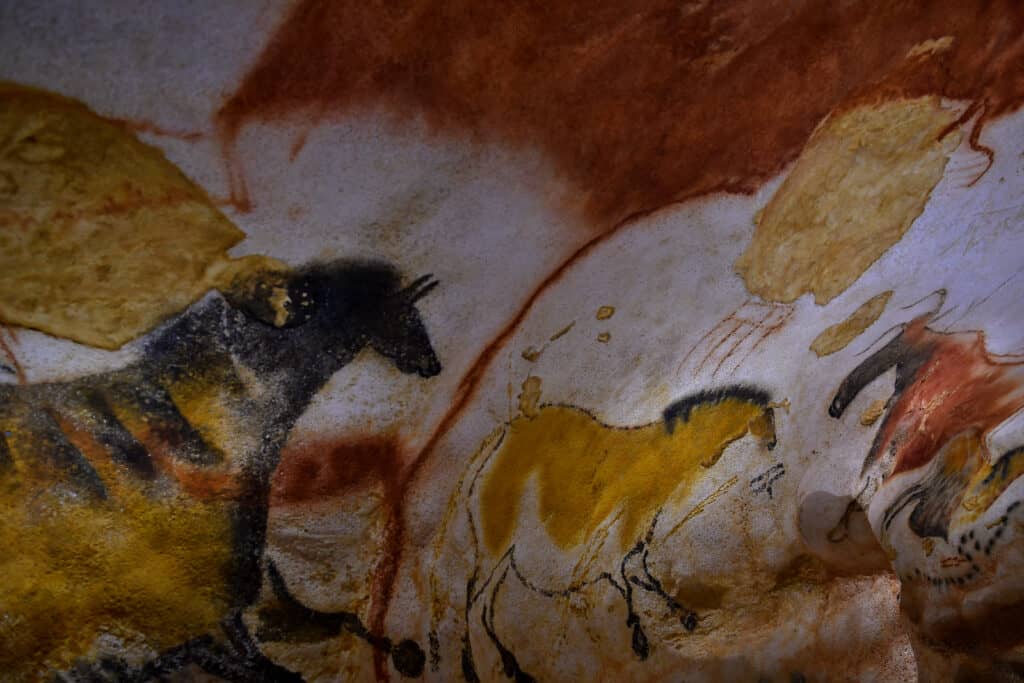
The biggest draw of this remarkable region has to be the magnificent cave paintings, particularly those at the state-of-the-art visitor centre of Lascaux. The clever interactive exhibits, featuring impressive reconstructions of the fragile paintings, are enough to inspire all amateur archaeologists!
But beyond the caves, this lush, verdant region offers much for tourists and is one of the most scenic places in France.
Enjoy hiking, canoeing, horse-riding, and mountain biking, or explore this atmospheric ‘bastide’ towns, fortified villages perched atop craggy, green hills. However, of all the wonderful French sites to see here, perhaps the most spectacular lie under the ground.
The Vézère Valley is home to some remarkable geological treasures, including huge cave networks adorned with glittering stalactites, stalagmites, and ethereal rock crystal formations. The Dordogne region is certainly one of the most beautiful places to visit in France.
THE LOIRE VALLEY BETWEEN SULLY-SUR-LOIRE & CHALONNES
The Loire is France’s longest and wildest river, an untamed carriageway tracing its way from the Ardennes mountains in France to the wetlands that meet the Atlantic Ocean south of Brittany.
However, its most-visited stretch is the 280km between Sully-sur-Loire and Chalonnes, dotted with dreamy chateaux, and surrounded by lush, fertile lands fed by the rich waters of the river.
As one of medieval France’s major trading highways, the Loire Valley has a long and profuse history. Here you’ll find beautiful, fairy tale castles, each with its own intriguing history and sumptuous décor.
Many of these castles were originally founded as hunting lodges for the French kings, but later were transformed into opulent pleasure palaces, reflecting to the sensorial beauty of the Loire region.
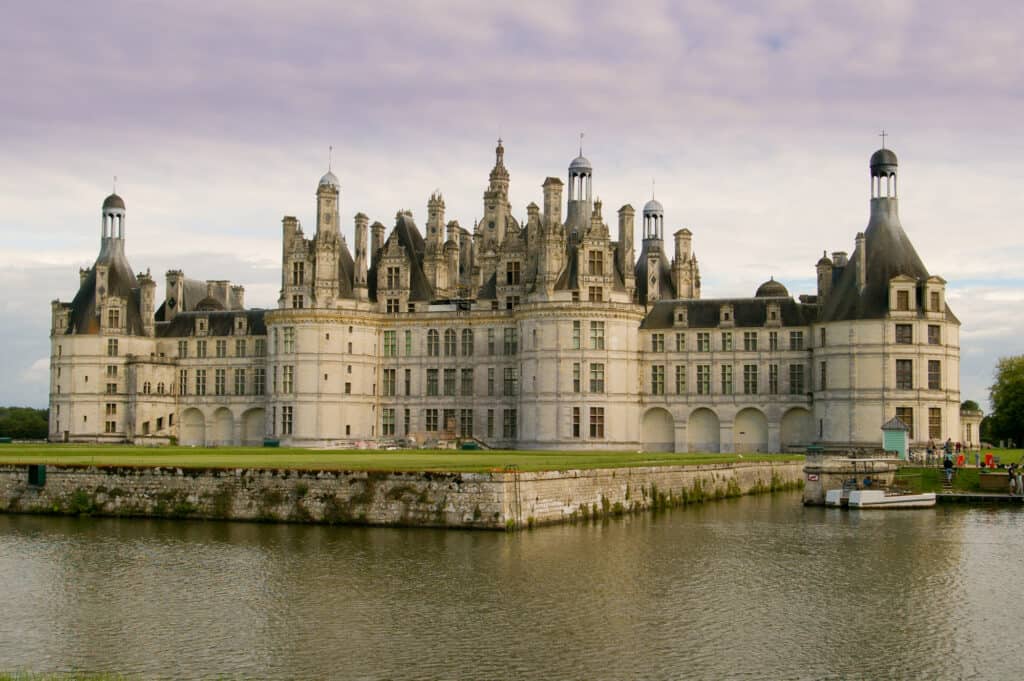
The Loire Valley boasts some of France’s most interesting historic towns and cities, such as Angers and Orleans, the city saved by the young Joan of Arc in 1429. However, the real attraction here is the valley itself, steeped in French traditions and shaped by a long history of wine production.
The wild banks of the river are a haven for all forms of life, and this is an excellent place for bird watching. The Loire Valley is, quite simply, the dreamiest region and one of the finest natural attractions in France, and well-deserving of its UNESCO status.
EPISCOPAL CITY OF ALBI, OCCITANIE
Albi, the ‘red city’, is one of Occitanie’s brightest jewels, albeit one with a dark history. This medieval town, perched on the banks of the Tarn, was the site of religious conflict in the early 13th century, when the French crown and Papacy joined forces to destroy heretical ‘Cathar’ beliefs that had taken root in Occitanie.
The Cathars were a Christian sect that challenged the traditional power of the Church, fostering a form of popular spiritualism that gained a huge following. Albi was known as a hotbed of Catharism, and the bloody campaign against the Cathars was ultimately known as the Albigensian Crusade.
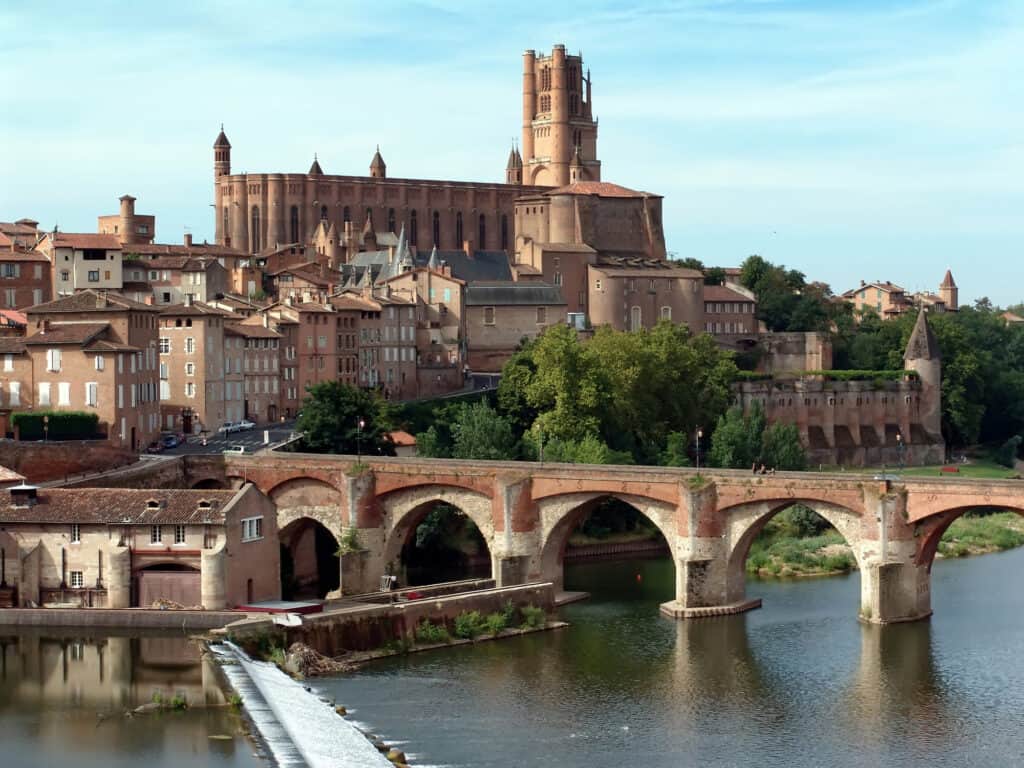
In the aftermath of the crusade, local bishop (and the scourge of the Cathars) Bernard de Castanet, wanted to make his mark on the city, as a reminder to the people to never challenge the authority of the Church again. He built an imposing cathedral fortress in the centre of the town, a towering Gothic monument that would stand forever as a testimony to the might and dominance of the Church.
Just in case the message hadn’t entirely sunk in, he expanded the neighbouring Berbie Palace into a fortress that would henceforth house the bishops of Albi. The Catholic Church was back on top.
Today, Albi is a warm, welcoming and beautiful city, known for the characteristic handmade, red bricks used in much of its architecture (look out for thumbprints in the walls!). The medieval cathedral-fortress still stands proudly over the city, surrounded by beautiful palace gardens.
One of the oldest castles in France, the Berbie Palace now houses the Toulouse-Lautrec museum, and boast an impressive collection of French art, including works by Matisse and Gauguin.
The medieval old town is picturesque and atmospheric, and the perfect place to lose a day, perhaps pondering the fate of those Cathar spiritualists, who disappeared 800 years ago.
THE CLIMATS, TERROIRS OF BURGUNDY
Burgundy is best known for its punchy, powerful red wines, and complex whites, and is one of the most popular destinations for vineyard tours in the whole of France. So popular, in fact, that the ‘climats’ of Burgundy were recently named as a UNESCO World Heritage Site!
Climat is the local term used for a plot of land that has been used for wine cultivation for hundreds of years, producing parcels of vines that have their own unique history and taste, fed from the rich soil that has developed over centuries.
There are more than 1000 climats in the Burgundy region, some of which bear names that have become legendary in French wine production.
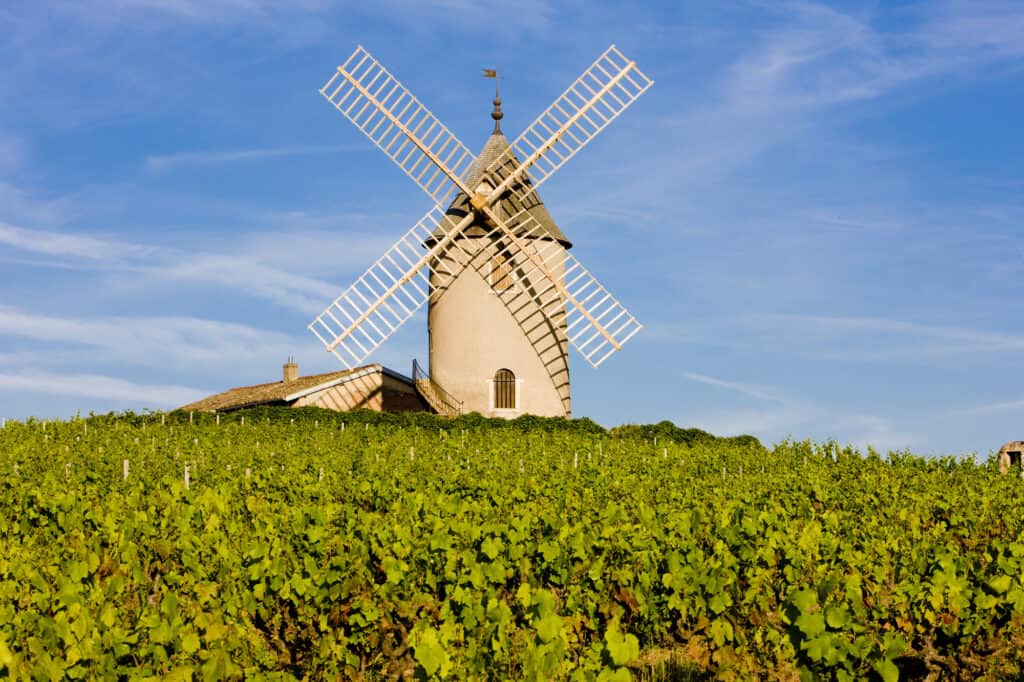
The climats of Burgundy are a somewhat unusual World Heritage Site as they comprise a region and a wine-making culture that has been passed down from generation to generation for hundreds of years. The structured vineyards span a vast, lush area, perfect for hiking and cycling, punctuated by friendly medieval French towns such as Dijon or Beaune.
This beautiful region oozes character and is the perfect place to immerse yourself in the produce and hedonism associated with French viticulture and gastronomy. A truly unique piece of French heritage, the Climats of Burgundy deserve their place as one of France’s greatest cultural treasures.
PAPAL PALACE, EPISCOPAL ENSEMBLE & AVIGNON BRIDGE, PROVENCE
Of all of France’s marvellous medieval monuments, the papal complex and bridge at Avignon remain one of the most impressive. Developed over the course of the 14th century, this vast Gothic palace is one of the most famous places in France –once the seat of the papacy and a renowned centre of culture and learning in the Middle Ages.
In 1305, in the wake of violence, unrest and intrigue in Rome, Pope Clement V decided to move the papal seat to Avignon. The head of the Catholic Church required a palace that would match the prestige of his office, and over the course of the 14th century, the ‘Avignon popes’ set about constructing a series of Gothic palaces that would rival anything that Rome had to offer.
Eventually, the palaces were joined together to make one imposing fortress with ten towers: a fitting monument to the might and influence of the medieval Church.
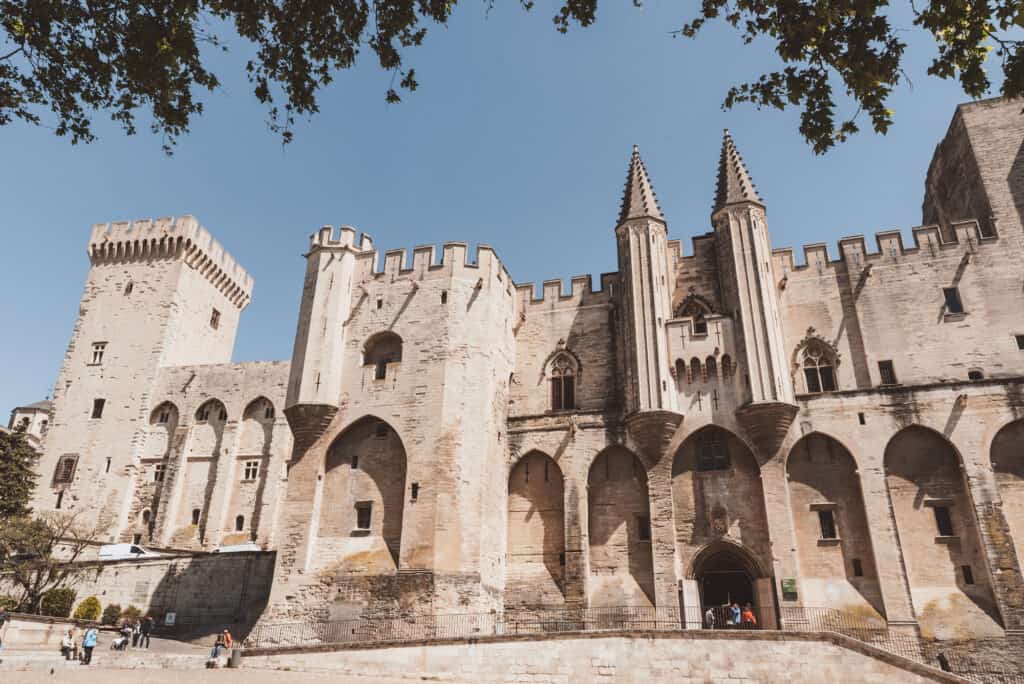
The papal court attracted artists, scientists and philosophers, making Avignon into a city of creativity and intellectual enquiry. This reputation has been passed down through the ages, and today, Avignon is one of the most artistically vibrant and productive cities in Southern France.
Don’t miss the annual summer arts festival, when the city comes alive with an international celebration of performance art.
The papal palace sits next to the powerful River Rhone, and the ruins of another formidable World Heritage Site. The bridge of Avignon, once with an incredible 22 arches, is said to have been divinely inspired, when a local shepherd named Bénezet heard the voice of God telling him to construct a bridge. Miraculously, he found himself able to lift an impossibly large stone, thereby laying the foundations for one of the most impressive medieval bridges in the world.
Although today only part of the bridge remains, for centuries it was a critical highway for pilgrims, traders and travellers, connecting the papal court to the wider world. They may only have stayed for a century, but the Avignon popes certainly left their mark on France.
Read More: Avignon Travel Guide
CHAMPAGNE HILLSIDES, HOUSES & CELLARS
The history of Champagne, one of the best places to visit in France, centres on an intriguing story. According to legend, in the 17th century, a Benedictine monk named Dom Pérignon made a fabulous discovery. Whilst experimenting with different winemaking techniques, he is said to have invented a double fermentation process that resulted in the first sparkling white wine.
Overcome by his discovery, he ran out into the streets, shouting, “Come quickly – I am tasting the stars!” And thus Champagne – that light, delicate sparkling wine of the Champagne region – was born.
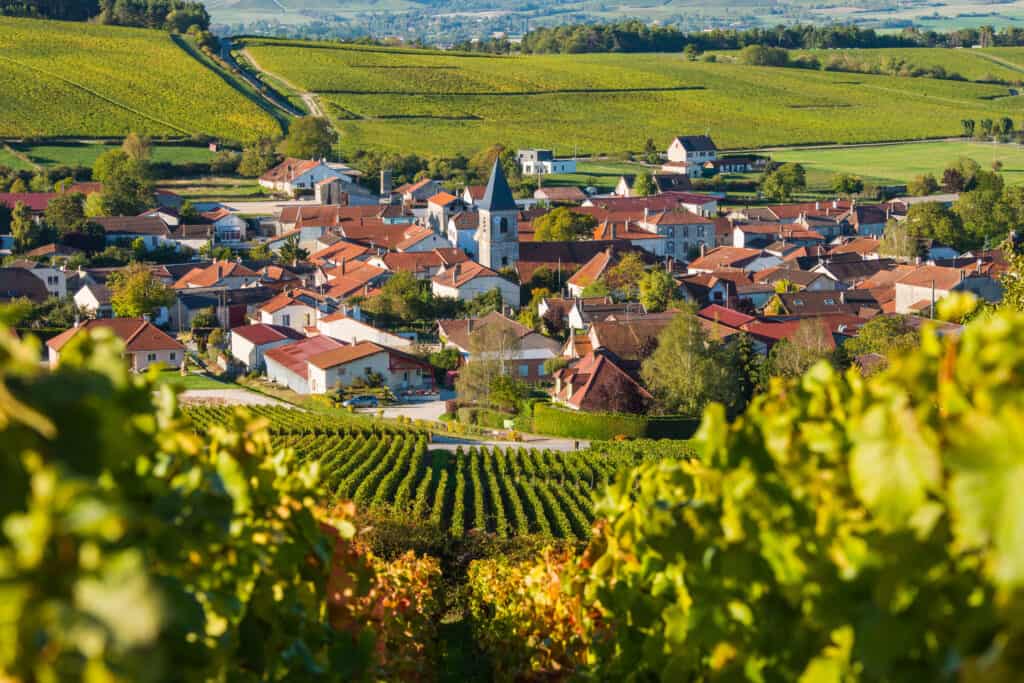
Unfortunately, this story is a 19th-century construction, and although Dom Pérignon is credited with revolutionising Champagne wine production, sparkling champagne didn’t become the dominant form of wine here until long after his death.
Nevertheless, the mystique associated with Champagne’s delicious, vibrant wines recently won them World Heritage Status, an acknowledgement of the depth artistry and tradition that goes into producing these fabulous wines.
Travel to Champagne and you’ll find cavernous cellars, hillsides sculpted by vineyards and fabulous wine stores – enough to keep any wine lover happy! The champagne region truly is one of France’s greatest cultural treasures.
How to Make the Most of Your Visit to These Historic Sites in France
When planning your trip to France, it can be tempting to want to do it all. I get it! There’s so much to see and do, and you don’t want to miss out on anything. But, unless you have unlimited time and resources it’s best to narrow your focus and decide which regions, attractions, or events are most important to you.
Once you’ve done this, and decided on your itinerary, the next thing I’d recommend doing is to book a tour to take a deep dive into French culture & heritage. Simply ‘seeing’ some of these incredible sites will just not do the experience justice.
French tour company Ophorus are leaders in delivering meaningful, insightful experiences at France’s top attractions. The expert guides will ensure your visit is as valuable as it can be, with their insider knowledge, friendly approach and unwavering enthusiasm.
The company’s commitment to excellence has awarded them a coveted spot in the TripAdvisor Hall of Fame for 5 years running!
France oozes history, and wherever you go, you’re sure to find echoes of the past, inscribed in the architecture, landscape and people of this fascinating country.
Hopefully, this list of cultural treasures and historical places in France has provided some inspiration for your next trip!
Pin this for later!
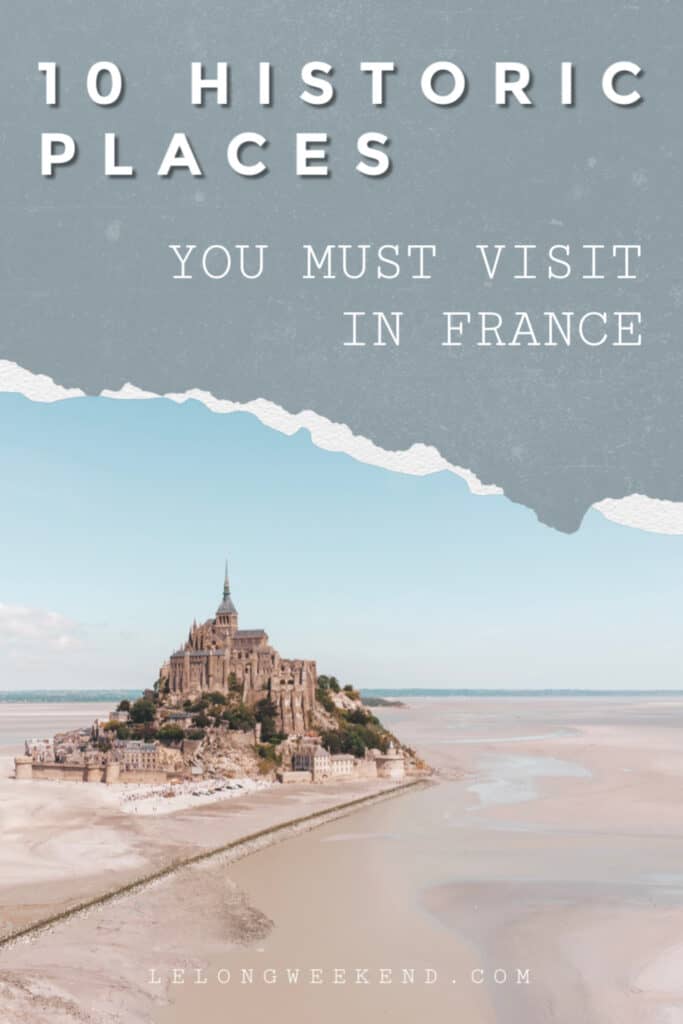
*This post has been bought to you in partnership with Ophorus. As always, Le Long Weekend maintains full editorial control of the content published on this site.

